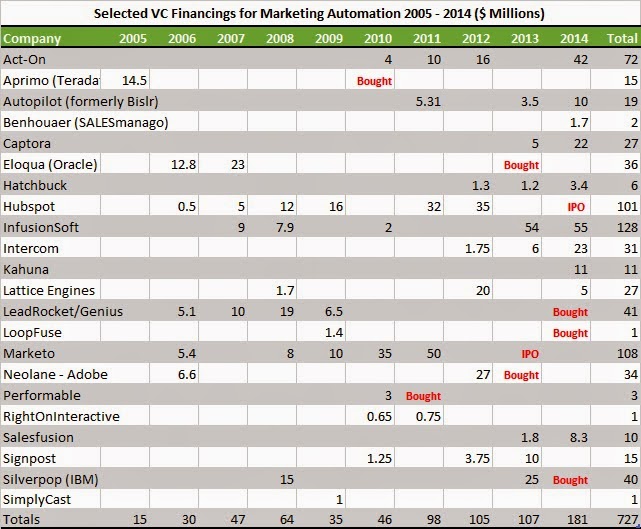Follow me on LinkedIn
Modern marketing is no longer an intangible, creative endeavor; it produces tangible and measurable results. Today, revenue can be traced back to marketing activities and touch points; not with exactitude, but with enough precision to steer an organization’s strategy towards its most profitable marketing activities and to avoid those without much payoff. Because the revenue impact of marketing is now intelligible, companies are less willing to put money into marketing’s black box and hope sales happen. Increasingly, the marketing department is expected to perform as a revenue generator, not a cost center.
But making the transition from cost center to revenue engine is not easy. It’s a gradual process, one that can take two to three years to accomplish, and requires ongoing investment in marketing technologies as well as in the data, content, and business processes that enable these technologies.
The good news is that at each stage, you will see a significant and measurable impact on your marketing results. Learn the four stages of transformation from basic, cost-centric marketing to revenue driven marketing and discover the key differentiators of each stage.
Basic Marketing
At this stage, a marketing department follows a checklist of activities, but none of these activities are effectively monitored for results. Sure, there are “must do” activities—the website, email marketing, a social media presence, and trade shows, for example—but these are mostly dictated by historical precedent and there is only a hazy idea which of these activities produces results. Instead of hard data that provides real insight into the effectiveness of marketing actions, the focus here is on activity itself. Marketers speak in terms of spending and outlay rather than expected response rates and revenue impact. At this basic stage, marketing is a cost center where anecdotes, theory, and history—not hard data—support the decision on the marketing spend.Lead Generation
As the marketing department realizes that activity alone is not enough, attention shifts to strategies that generate leads for the sales team. At the lead generation stage, budgets shift from activities whose results are purely theoretical to those producing tangible results—leads. The nascent awareness of which marketing channels and techniques produce tangible leads is a significant leap beyond basic marketing. At this stage, companies concentrate on developing content, attracting visitors through search engine optimization, and using email marketing to get their content in front of prospects with the hope of generating clicks. Emphasis may be put on development of white papers or other downloadable content.The quality of the lead, however, is still not considered. Leads delivered to sales are neither scored nor prioritized. Here marketing can influence revenue but it’s still largely considered a cost center. While it’s a major step up, a business that focuses on lead generation rather than lead scoring, nurturing, and development is still far from maximizing its marketing potential as a revenue generator.
Quantitative Marketing
When the marketing team moves from amassing leads to scoring, prioritizing, and sorting those leads, it reaches the third stage: quantitative marketing. This stage is marked by a shift to repeatable and quantifiable processes. Here, a marketing automation platform is required. Two new dimensions characterize the quantitative stage. First, lead scoring enables marketers to deliver higher quality leads. Whereas in the lead generation stage, a white paper download alone may constitute a lead, in the quantitative stage, marketing takes a richer view of the prospect, taking into account firmographic, profile and behavioral information before sending it to sales. Second, nurture campaigns allow marketers to deliver customized streams of contents based on prospect profiles and behavior. By combing scoring with nurture workflows, the quantitative stage represents a major leap from the lead gen stage.Revenue Marketing
At the apex of modern marketing is the revenue marketing stage Here, not only are leads quantified by their profiles and behavior; each opportunity can be tied back to a set of marketing activities. The impact of every marketing activity is now associated with revenue results. This is accomplished through integration of marketing automation and CRM systems like Salescorce.com. Leads flow into CRM where they are converted into sales opportunities and revenues.This integration between sales and marketing enables marketers to use advanced nurture flows to influence and accelerate the sales cycle. Each lead is qualified and moves through a customized nurture program. Every marketing activity serves a purpose and is a part of the greater whole. The cost of every campaign can be assessed in terms of expected returns on the company’s investment.
At the revenue marketing stage, revenue generated and attributed to marketing is now repeatable, predictable and scalable. The revenue marketing stage requires advanced use of marketing automation software but the payoff is huge; marketing has now fully transitioned from a cost center to a revenue driver.
© Marketing Tech Report 2015 All Rights Reserved.












